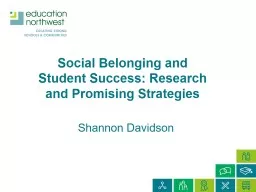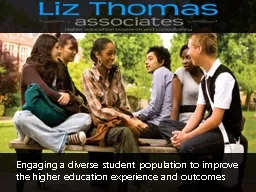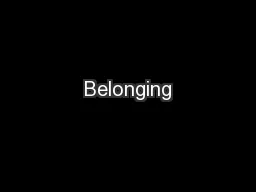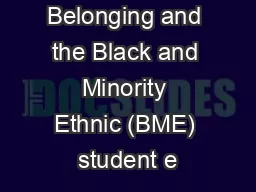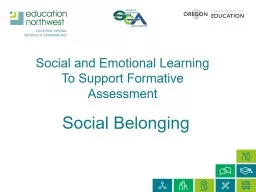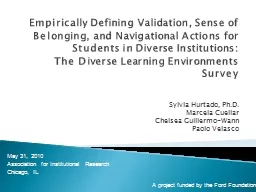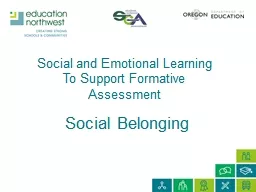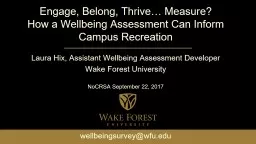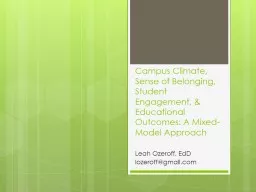PPT-Social Belonging and Student Success:
Author : liane-varnes | Published Date : 2018-03-22
Research and Promising Strategies Shannon Davidson Research Evaluation Currently evaluators for GEAR UP Wyoming and GEAR UP Hawaii Technical assistance Professional
Presentation Embed Code
Download Presentation
Download Presentation The PPT/PDF document "Social Belonging and Student Success:" is the property of its rightful owner. Permission is granted to download and print the materials on this website for personal, non-commercial use only, and to display it on your personal computer provided you do not modify the materials and that you retain all copyright notices contained in the materials. By downloading content from our website, you accept the terms of this agreement.
Social Belonging and Student Success:: Transcript
Download Rules Of Document
"Social Belonging and Student Success:"The content belongs to its owner. You may download and print it for personal use, without modification, and keep all copyright notices. By downloading, you agree to these terms.
Related Documents

